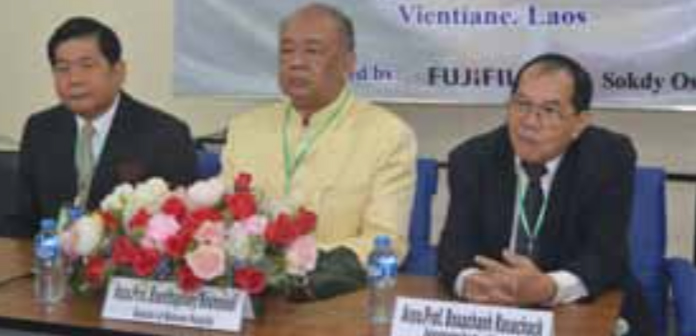The number of gastrointestinal problems identified at Mahosot Hospital increased significantly this year as a result of better testing and diagnosis, according to experts in the field.
The information was revealed at the Laos-Japan Endoscope Joint Meeting between Mahosot Hospital, Setthathirath Hospital, and specialists in the field from Nagoya University, Japan.
Figures show that last year more than 800 people were examined using endoscopes and over 300 of them were found to be suffering from gastrointestinal problems.
So far this year checks conducted on 1,000 people have revealed that over 800 of them were suffering from gastrointestinal ailments.
Addressing media at the meeting on Monday, Director General of Mahosot Hospital, Associate Professor Dr Bounthapany Bounxouei, said more gastrointestinal conditions were being identified because doctors were using endoscopes more efficiently and therefore could diagnose more cases.
“If doctors don’t understand how to use an endoscope they will have difficulty in detecting and treating gastrointestinal problems,” he said.
The meeting was very important to broaden knowledge and technical capacity in the use of new equipment and conducting specialised endoscopic procedures, he added.
“Doctors are now aware that technical assistance is very important in making diagnoses before conducting an operation. The meeting also continues the collaboration between Nagoya University and Lao hospitals in the use of new equipment in patient treatment,” Dr Bounthapany said.
“But we need to develop this field so that we become a centre of excellence in endoscopic training in Laos while continuing the collaboration and improving training,” he added.
Nagoya University representative Prof. Dr Hidemi Goto said his group had provided new knowledge and skills through lectures and hands-on training about endoscopic procedures to local doctors.
An endoscopy is an instrument used to view and operate on the internal organs and vessels of the body, allowing surgeons to view problems without making large incisions.
A surgeon inserts an endoscope through a small cut or an opening in the body such as the mouth. An endoscope is a flexible tube with an attached camera that allows a doctor to see. A doctor can use forceps (tongs) and scissors on the endoscope to operate or remove tissue for a biopsy.
Source: Vientiane Times



